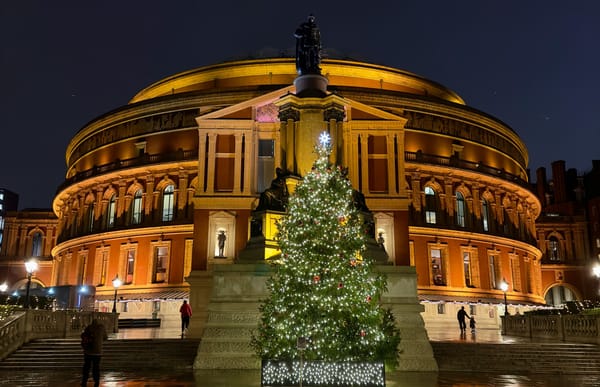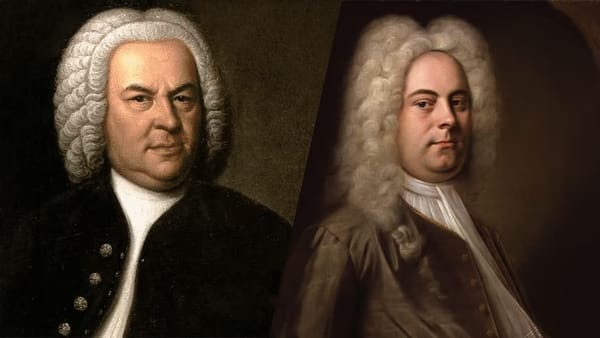Jazz Instrumentation 101: Key Instruments and Their Roles
From rhythm section to horn line, every instrument in jazz plays a unique part. This guide explores the piano, bass, drums, trumpet, and saxophone — the voices that shape jazz’s timeless sound and energy.

Jazz, at its core, is a conversation — a vibrant, improvisational dialogue between instruments, ideas, and emotions. Born from African-American communities in New Orleans in the early twentieth century, jazz has since evolved into countless forms: swing, bebop, cool jazz, fusion, and beyond. Yet, across these styles, certain instruments have remained central to its identity.
Understanding jazz instrumentation is not simply about identifying which instruments appear in a typical ensemble, but about grasping how each contributes to the collective sound. Every instrument has a distinct function — rhythmic, harmonic, or melodic — and together they weave the rich tapestry that defines the genre.
This article explores the core instruments in traditional jazz, examining their unique roles within the ensemble and how they interact to create the ever-shifting magic of jazz music.
1. The Rhythm Section
If jazz were a house, the rhythm section would be its foundation. It provides the pulse, groove, and harmonic framework upon which melodies and improvisations are built. A standard rhythm section typically includes the piano, double bass, and drums, sometimes joined by guitar.
The Piano
In jazz, the piano is both an accompanist and a soloist. Pianists “comp” — short for accompany — by playing syncopated chords that respond to and support the soloist. This interplay between rhythm and harmony gives jazz its characteristic fluidity.
Legends like Thelonious Monk and Bill Evans redefined the instrument’s role. Monk’s angular harmonies and use of space created tension and wit, while Evans introduced lush voicings and introspective lyricism. Pianists are expected not only to outline the chords but to reimagine them — to voice them in unexpected ways, add rhythmic displacement, and sometimes even challenge the soloist, prompting new directions.
Beyond comping, the piano frequently takes solos, drawing from blues phrasing, stride techniques, and classical influences. It bridges the rhythmic drive of the drums and bass with the melodic freedom of the horns, acting as both anchor and explorer.
The Double Bass
The double bass (or upright bass) provides the steady heartbeat of jazz. Typically plucked (pizzicato), it anchors the harmony and defines the groove through the walking bass line — a continuous stream of quarter notes that outline chord changes while propelling the rhythm forward.
Players like Charles Mingus, Paul Chambers, and Ray Brown elevated the bass from a mere timekeeper to a melodic and expressive voice. Mingus, in particular, treated the bass as a composer’s instrument, rich in emotional and dynamic range.
The bassist’s role is both technical and spiritual: to keep time, to shape harmony, and to subtly guide the entire ensemble. When the bassist locks in with the drummer, the music breathes with vitality.
The Drums
Jazz drumming is not about volume or dominance, but about dialogue. The drummer provides timekeeping and texture, shaping the music’s dynamic flow. In early New Orleans jazz, drummers played in marching-style patterns, but by the swing era, the focus shifted to the ride cymbal, which established the characteristic swing feel.
Drummers like Art Blakey, Max Roach, and Elvin Jones transformed jazz rhythm into an art of conversation. Roach pioneered melodic drumming — making the drums sing — while Jones’s polyrhythmic style with John Coltrane created a spiritual intensity that redefined the role of rhythm in jazz.
In modern ensembles, drummers listen closely to soloists, responding with subtle accents, cymbal swells, or bursts of energy. Their role is both supportive and interactive — they shape the story, not just the beat.
The Guitar
Although not always present in early jazz bands, the guitar became increasingly central in swing and bebop. In the 1930s, guitarists like Freddie Green (of Count Basie’s Orchestra) established the instrument as a rhythmic cornerstone, strumming four-to-the-bar chords that added drive and cohesion to the rhythm section.
Later, with amplification, the guitar evolved into a solo instrument. Innovators like Charlie Christian, Wes Montgomery, and Joe Pass expanded its harmonic vocabulary and expressive possibilities. In small ensembles, the guitarist often alternates between chordal comping and melodic improvisation, serving as a bridge between the piano’s harmonic world and the horn section’s melodic lines.
2. The Horn Section
Where the rhythm section provides structure, the horns provide personality. In jazz, horns — typically trumpet, saxophone, and trombone — carry the melody and improvisational conversation. Their contrasting timbres allow for intricate call-and-response textures, ensemble harmonies, and soaring solos.
The Trumpet
The trumpet is often the voice most associated with jazz — bright, commanding, and emotionally direct. Its sharp attack and wide dynamic range make it ideal for both melodic clarity and expressive intensity.
From Louis Armstrong’s pioneering phrasing and joyful tone to Miles Davis’s introspective coolness and Dizzy Gillespie’s dazzling virtuosity, the trumpet has shaped jazz’s evolution at every stage.
In traditional New Orleans ensembles, the trumpet (or cornet) often led the front line, playing the main melody while clarinet and trombone improvised counterlines. Later, in bebop and beyond, it became a vehicle for breathtaking improvisation, capable of conveying everything from exuberance to melancholy with a single bent note.
The Saxophone
If the trumpet embodies brilliance, the saxophone embodies warmth and sensuality. Its expressive flexibility allows it to whisper, cry, or shout. The saxophone family — soprano, alto, tenor, and baritone — covers a vast range of timbres, from the piercing lyricism of the soprano to the smoky depth of the baritone.
Few instruments rival the saxophone’s association with jazz. Charlie Parker revolutionised the alto sax with bebop’s harmonic sophistication, John Coltrane transformed the tenor into a spiritual instrument, and Stan Getz introduced a lyrical coolness that defined the bossa nova era.
In an ensemble, the saxophone often shares the melodic spotlight with the trumpet, trading solos and engaging in lively dialogue. Its human-like phrasing — breath-driven, vocal, and expressive — makes it the emotional centre of many jazz performances.
The Trombone
Often underestimated, the trombone adds warmth, depth, and a touch of playfulness to the jazz ensemble. Its unique slide mechanism allows for smooth glissandi — those signature “smears” that give early jazz its characteristic swagger.
In the swing era, trombonists like J.J. Johnson brought technical precision and lyrical phrasing to the instrument, while in big bands, it often provided rich harmonic support and counter-melodies beneath the trumpets and saxophones.
The trombone’s versatility lies in its ability to shift roles — from robust bass harmonies in ensemble passages to expressive solo lines that can sound both mournful and jubilant.
3. Additional Instruments
As jazz evolved, so did its instrumentation. The post-war era saw musicians incorporating new sounds, textures, and technologies.
- Clarinet: A staple of early jazz, particularly in New Orleans and swing bands. Its agile tone was central to players like Benny Goodman and Sidney Bechet.
- Vibraphone: Introduced by Lionel Hampton and later refined by Milt Jackson, it brought a shimmering, bell-like sound to jazz, blending percussion with melody.
- Flute: Particularly in modern and Latin jazz, the flute added airiness and lyricism, as heard in the playing of Herbie Mann and Hubert Laws.
- Organ: The Hammond B3, popularised by Jimmy Smith, merged gospel warmth with jazz groove, creating a new soul-jazz sound.
- Electric Bass: Replacing the upright bass in fusion and contemporary jazz, it introduced funk-driven rhythms and new tonal possibilities.
- Electronic keyboards and synthesisers: In fusion and modern jazz, instruments like the Fender Rhodes and Minimoog expanded the harmonic and textural range of the ensemble.
4. The Ensemble
What truly defines jazz instrumentation is not the instruments themselves, but how they interact. Jazz thrives on communication. Each player listens, responds, and contributes spontaneously to the unfolding story.
In a traditional combo, you might find trumpet, saxophone, piano, bass, and drums. The rhythm section lays down the groove and harmonic progression, while the horns alternate between ensemble passages (the “head”) and improvised solos. During a solo, the rhythm section shifts subtly, following the soloist’s phrasing and dynamics.
In big bands, the instrumentation expands to include multiple trumpets, trombones, and saxophones, creating lush harmonies and powerful arrangements. Here, the focus lies in the contrast between written sections and improvised solos — a balance of structure and freedom.
Ultimately, jazz instrumentation mirrors the essence of jazz itself: collaboration and individuality in harmony. Each instrument retains its voice yet contributes to a collective pulse.
5. Choosing Your Role in a Jazz Ensemble
For students or musicians entering jazz, understanding each instrument’s role helps you find your place in the ensemble:
- Drummers and bassists should prioritise time, groove, and communication.
- Pianists and guitarists need to master comping, voice leading, and harmonic awareness.
- Horn players must develop strong ears for phrasing, articulation, and melodic invention.
Most importantly, every jazz musician must learn to listen — the real hallmark of the genre. Jazz is not a competition but a shared conversation, where space, timing, and empathy matter as much as technical mastery.





